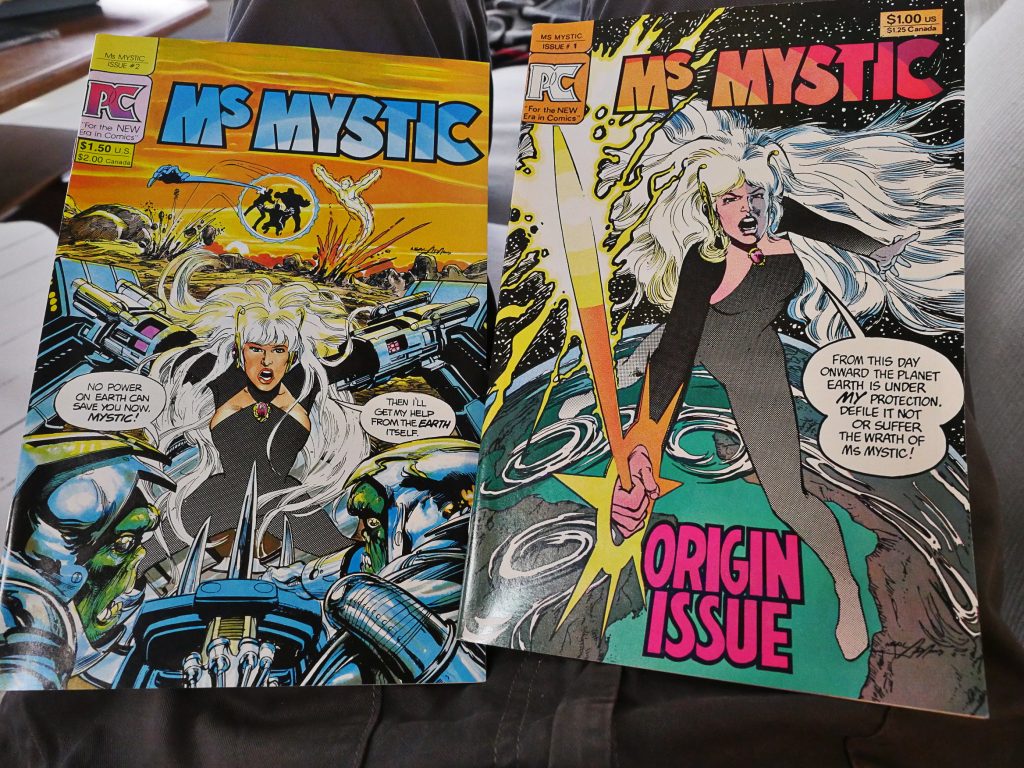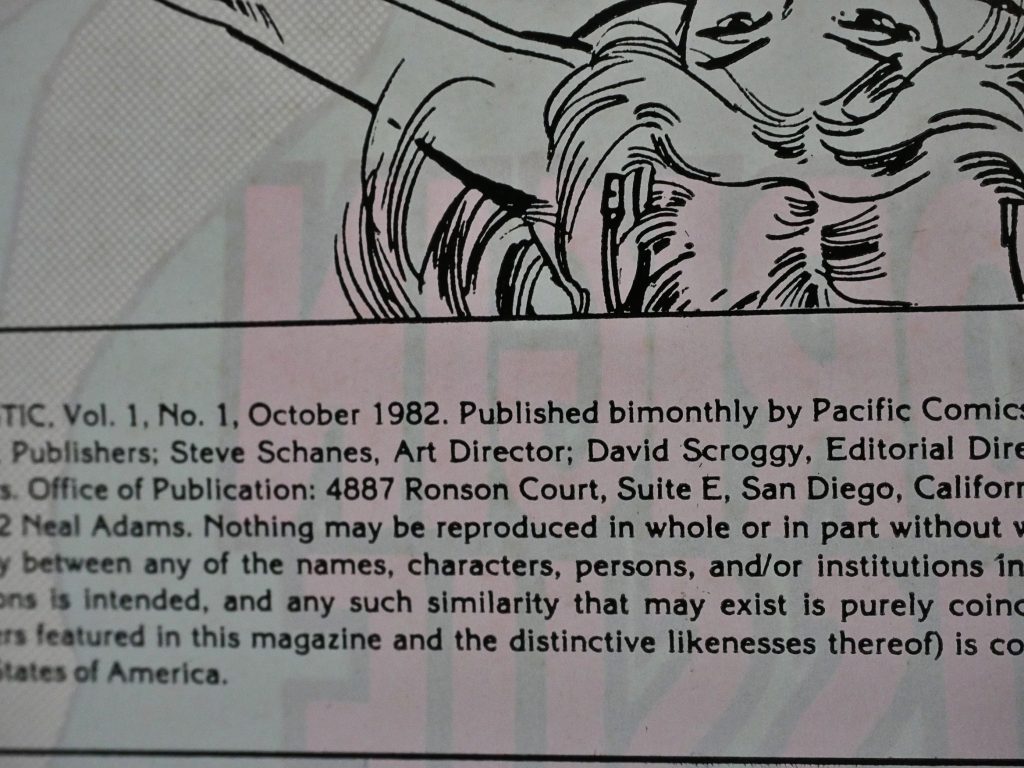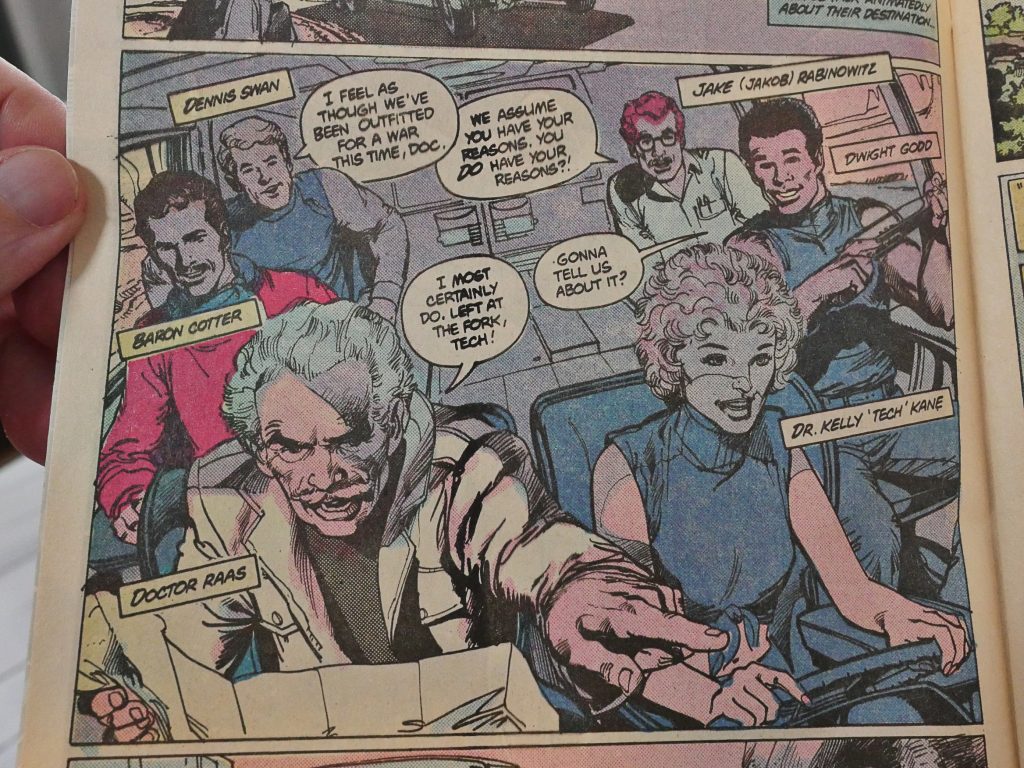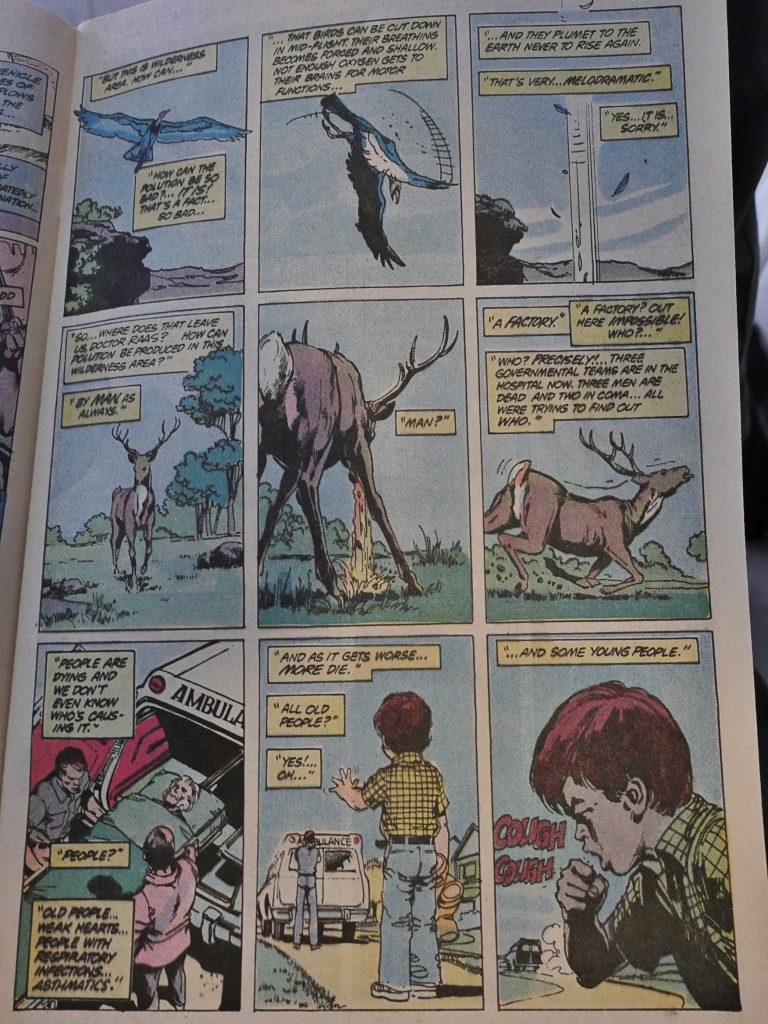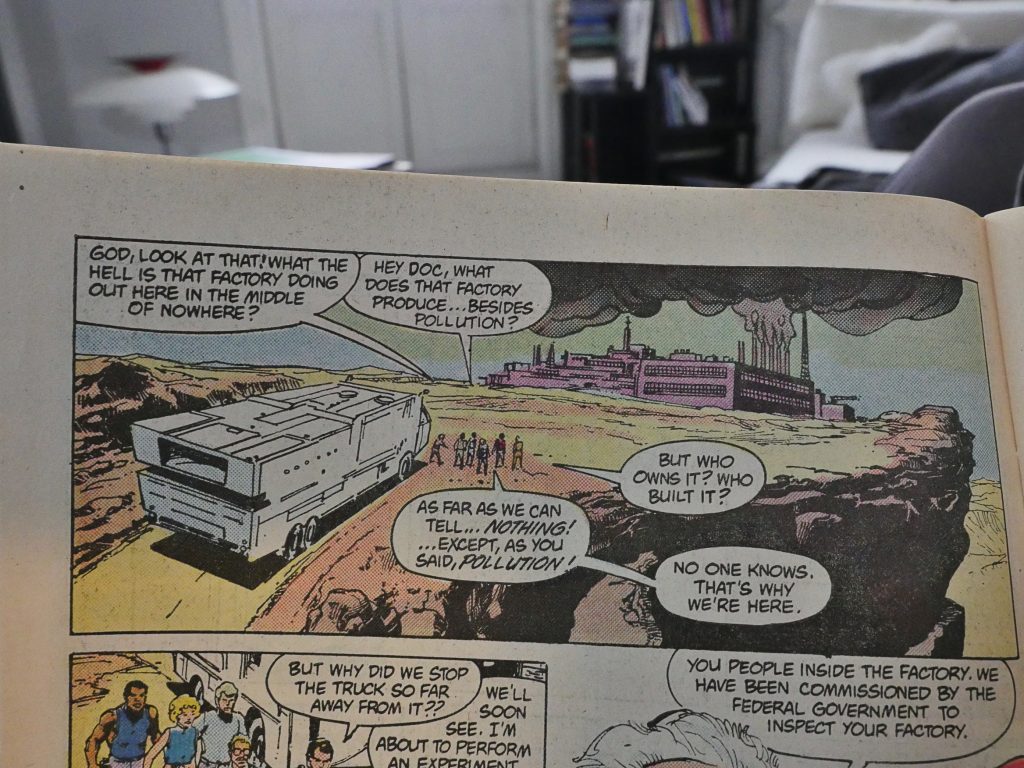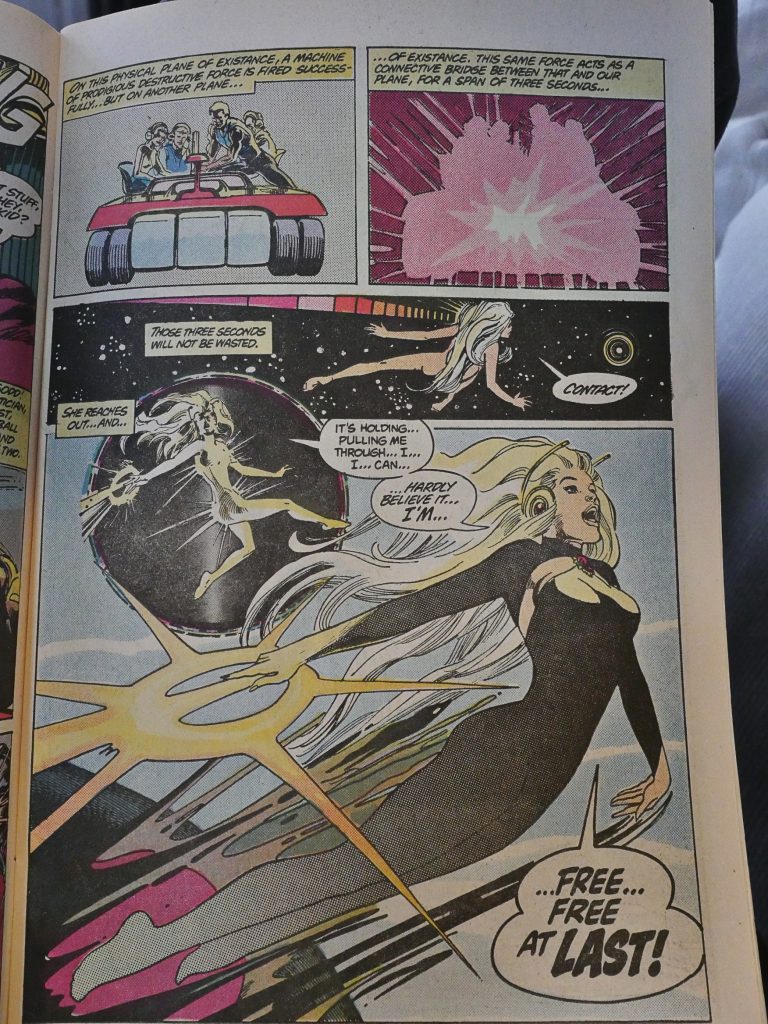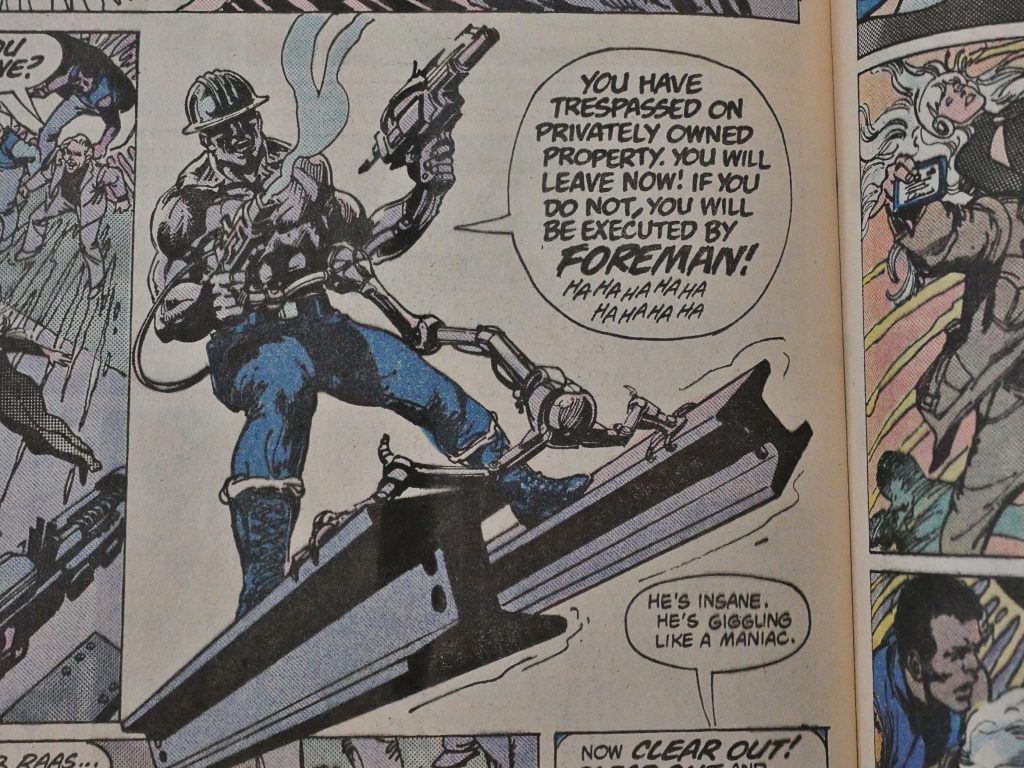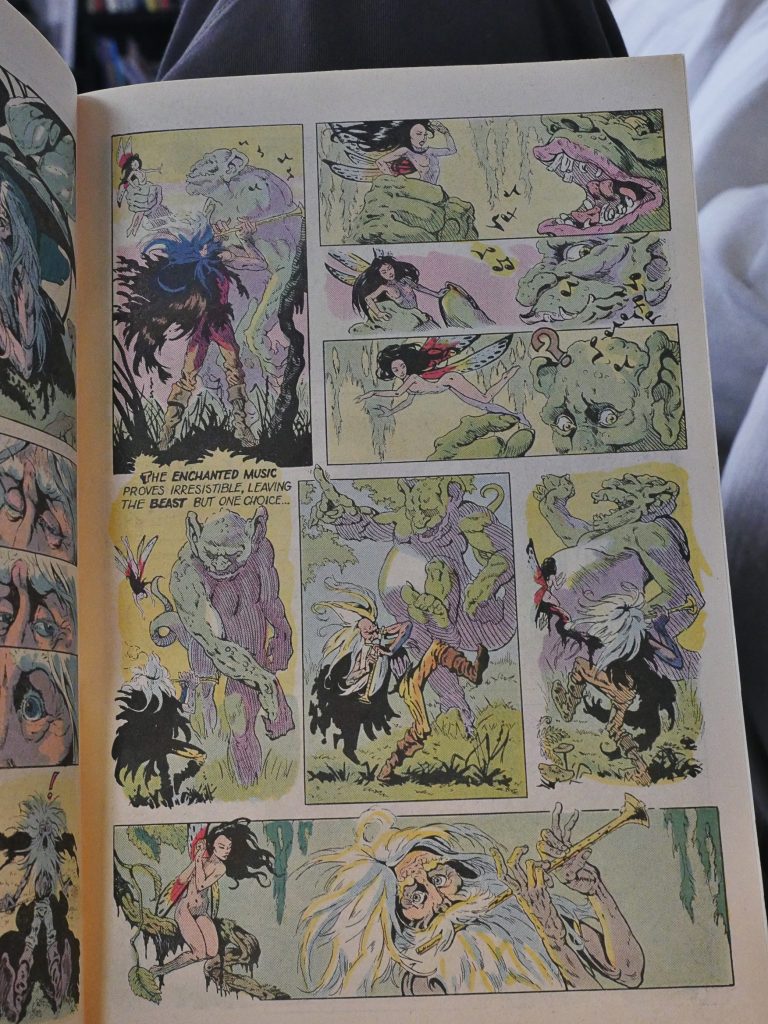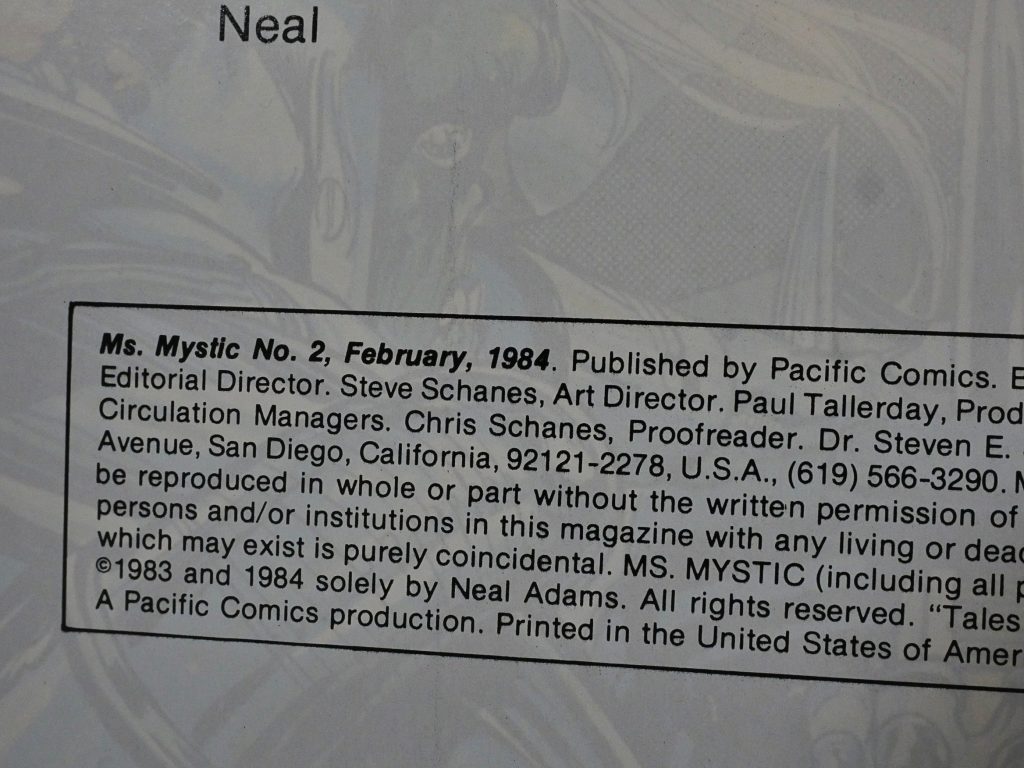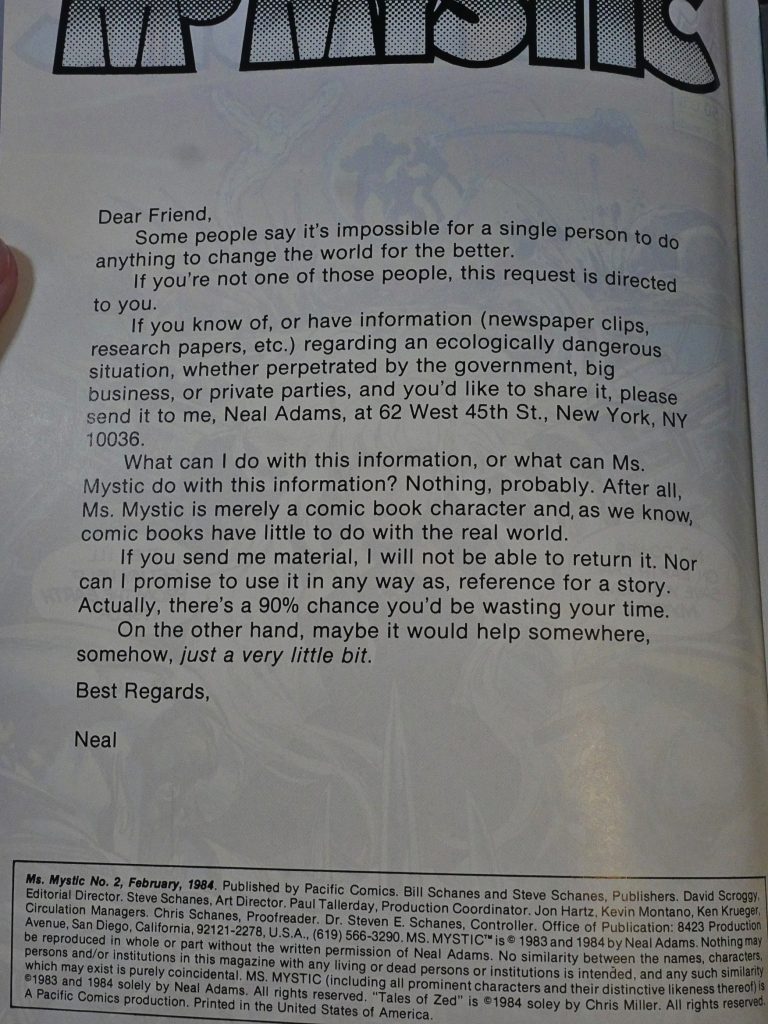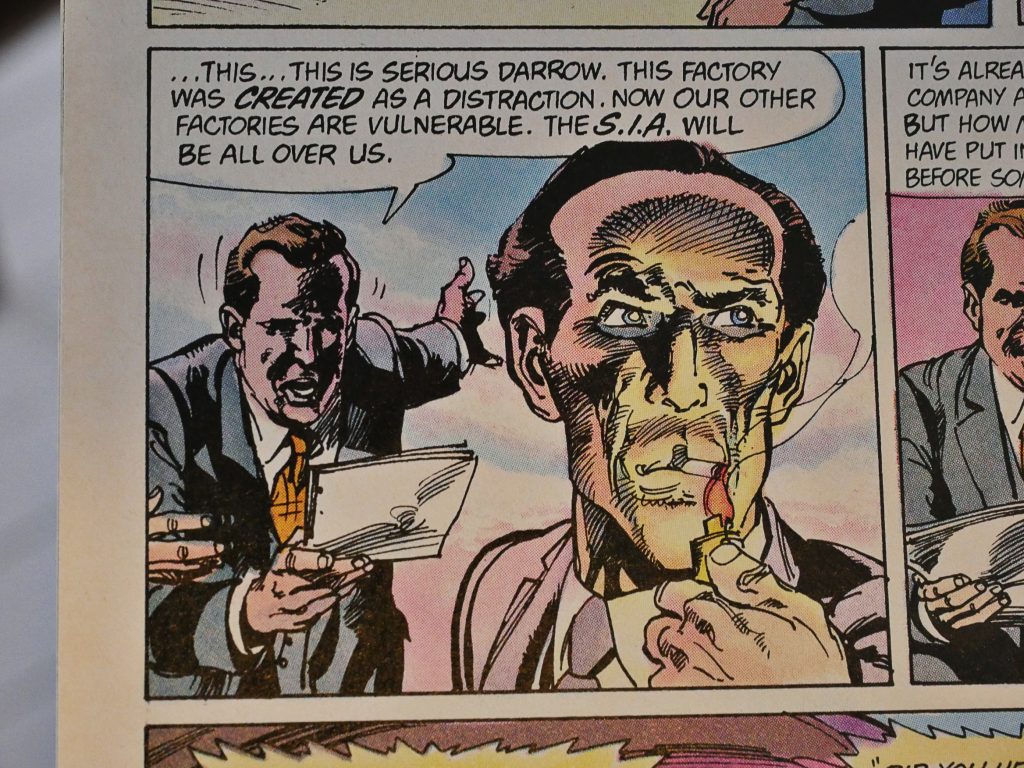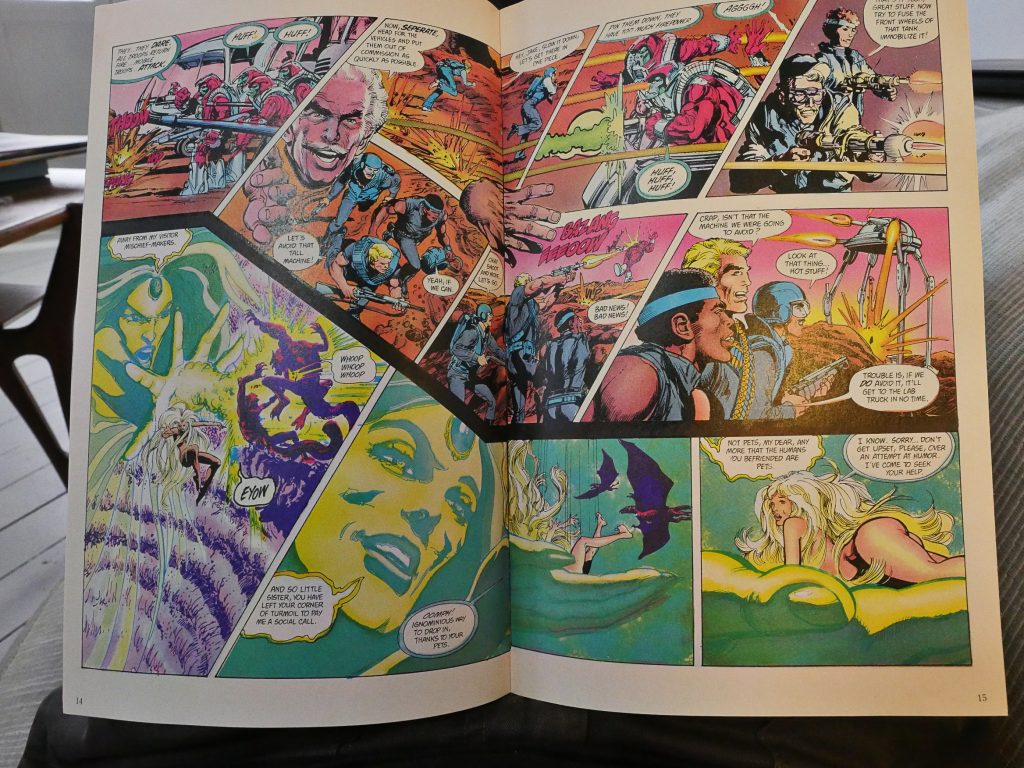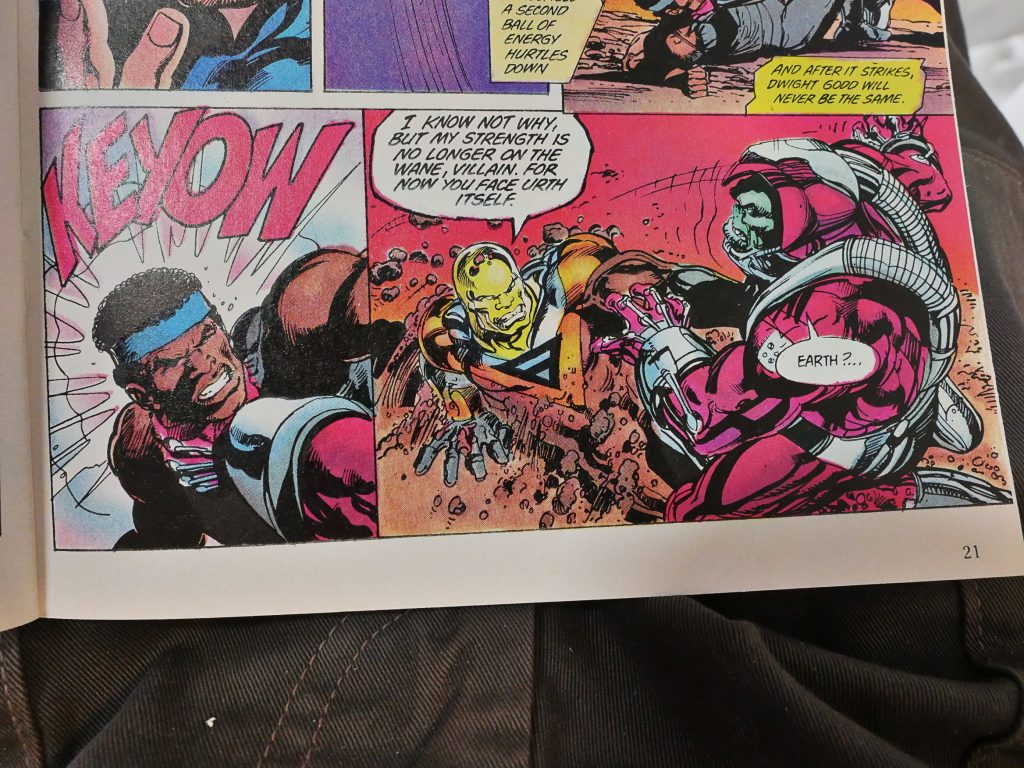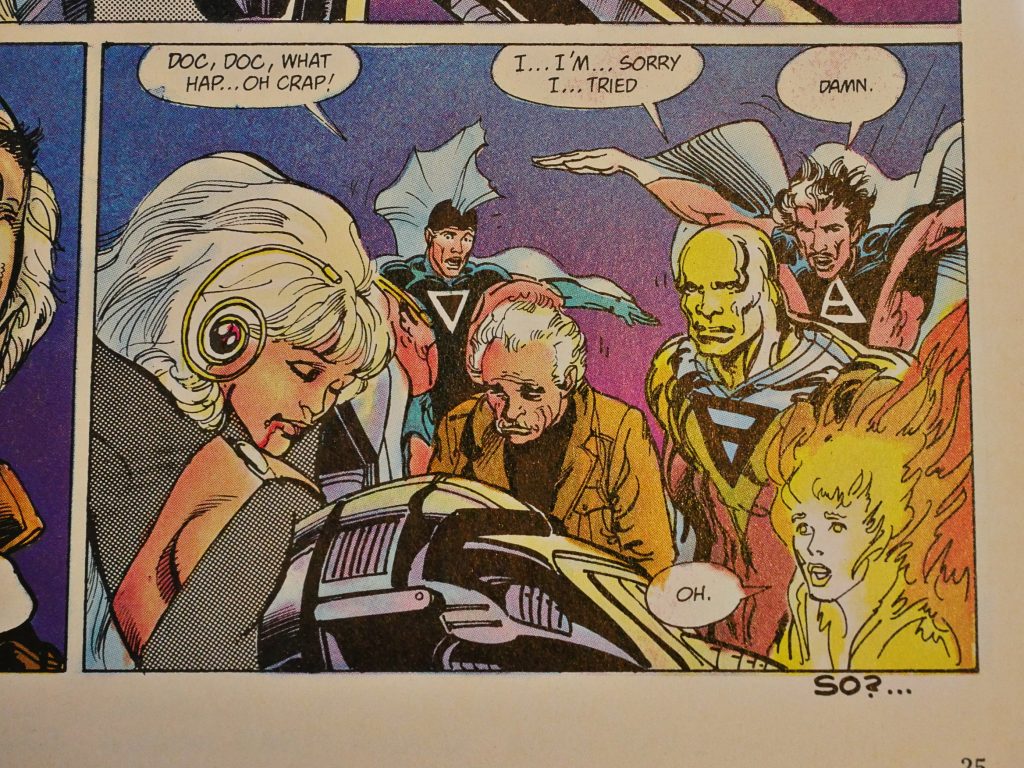Ms. Mystic (1982) #1-2
The pattern emerging from reading these comics is (duh) that Pacific Comics is a very artist-driven company. Whereas Eclipse Comics was basically all the disgruntled Marvel writers (Steve Gerber, Don McGregor etc), Pacific Comics is basically all the famous Marvel/DC artists: Jack Kirby, Mike Grell and now Neal Adams.
I think that makes sense: The Schanes brothers had published an extensive list of portfolios, so they had presumably built up relationships with artists, while they didn’t have the same with writers.
“Published bimonthly.” If I remember correctly, this would become something of a running joke in Amazing Heroes and other comics publications: Neal Adams was incredibly late with all his comics.
In an interview at the time, he stated that Ms. Mystic would be 12 bimonthly issues.
Adams not very imaginative in assembling his plucky cast of characters. Spoilers: Four of them are going to turn into Earth elementals. Can you guess who’s going to be Earth and who’s going to be Fire?
Yes.
Neal Adams had apparently stopped doing comics altogether at this point, and was doing lucrative illustration work instead, so it’s easy to imagine that the concept of this comic book was important enough to entice him back into doing comics.
In an interview with Gary Groth in Comics Journal 72:
GROTH: Why did go to pacific
instead of publishing it through Continuity?ADAMS: I didn’t go to Pacific. Pacific
came to me. The reason I agreed to do
it with Pacific is that, first of all, I
don’t intend to be a comic book pub-
lisher. I intend to be a comic book
-‘with the accent on book-publisher
in that Continuity will do the graphic
novels. Pacific Comics is interested in
doing comic books, a field I still wish
to be involved in. The reason I went
with Pacific is because Pacific was will-
ing to allow me to keep my character,
not interfere with any other rights
that I would have in the character,
not give me a work-made-for-hire
agreement, and pay me a reasonable
though not exorbitant amount of
money for the right to publish it as a
comic book. I felt it was a fair deal. In
return, my job is to give them a comic
book that will sell well and make
money for them. It seemed incredibly
fair compared to the deals that Marvel
and DC offer.
Comic book stores were excited:
Neil Adam’s Ms Mystic #1 had initial orders just shy of 225,000 units
In case you didn’t guess it, Ms. Mystic is about environmentalism. There was a preview in an issue of Captain Victory about hunters being assholes, but this time Adams is targeting bigger villains:
People who build factories that produce nothing but pollution, because well you know.
Ms. Mystic doesn’t appear until well into the first issue.
I have to say that I think her costume design is pretty fabulous: The zip-a-tone that fades to white is visually arresting.
The villain: FOREMAN! Ha ha ha.
Chris Miller does the backup feature in both issues, and the artwork’s pretty nice, but the stories go absolutely nowhere.
So, two years later, the second issue of Ms. Mystic appears.
Adams requests that the readers send him information about ecologically dangerous situations, so I think he was really into the book.
The second issue is printed on nice, white paper, which is able to carry Adams’ really quite spiffy artwork a lot better than the newsprint in the first issue.
Most of the issue is “split screen”, with Ms. Mystic communing with Mother Earth while the rest of the plucky cast fight aliens (?) that are somehow connected with the plot of the pollution-only factory (I think). It’s a bit on the confusing side, but it looks great.
And for those who participate in the “elemental” quiz… The answer is… yes… He’s Earth. I mean Urth. (The woman is Fire.)
And then it ends on a “So?”, which is pretty original.
After Pacific went bankrupt, Adams was one of the few people who didn’t take their books over to Eclipse Comics. Instead he started his own publishing company, Continuity Associates, who continued to not publish Ms. Mystic very often:
The comic published nine issues between 1982 and 1994.
So about one per year?
From an interview in Comics Journal 100:
GROTH: Well, tell me a little about Ms.
Mystic. What was the arrangement
and why didn’t subsequent issues come out:ADAMS: Well, the arrangement With Ms.’
Mystic was that I would prepare Ms. Mystic,
and after Pacific had the issue in their
hands, then they would publicize it and
print it. As you Pacific had a great
desire to get product on the marketplace,
as quickly as possible, and there are certain
advantages to getting product on the
marketplace. Some of those advantages are
that it’s better to print four comic boas
than it is to print one comic book, because
your price on the press, your set-up time
becomes less. So they were running into
situations where they were trying to save
money, and when we would warn them
that Mystic: wasn’t prepared, they Would
say, “When would it be prepared?,” and we
would say, “Well, we can give you an
estimate, but we can’t give you a time. As
agreed, are not supposed to publicize it
until the time you have received it.” And
they went ahead and publicized, and they
didn’t get it. We warned them: You’re not
supposed to do this. The deal is that Neal
runs Continuity, and when he has time, he
does Ms. Mystic, and that’s the only way it
works. And they agreed that that was fine,
and as long as they got one once in a while,
it was all they cared about, but they went
ahead and made the mistake of publicizing
it, and it wasn’t ready. So, it got to be a
little bit Of a problem. We had agreed to do
six issues of Ms. Mystic but we didn’t agree
on a time schedule, because there was no
time schedule. When I started to do Ms.
Mystic, you must remember that was pret-
ty much out of the comic-book field. Not
that I didn’t desire-to come back into the
comic book field, but when you change
careers, you get into your new career. If
your new career takes up a lot of time,
which my new careers – you’ll have to ex-
cuse my using the plural there, but this
seems to be a plural here – I got into my
new careers, they were taking a lot of my
time, and when Pacific talked to me about
doing a comic book, we told them ahead of
time that I would not be able to sit down
and turn out a standard comic book. I’d be
able to do it whenever I had time. And I
did it, for the most part, with Pacific,
because I was interested in getting other
people to work with Pacific. I felt that sup.
porting an independent publisher was a
good thing to do, since I had made such a
stand for independent publishing and
against this work-made-for-hire principle.
Somebody’ came along and said, ‘ ‘We’re
doing it.” Then, it sort of behooved me to
say, “Well, I’ll get behind it. I think this is
great, and I think it ought to be
supported.”
Well that explains it.
But what did the critics think? Somebody anonymous in Amazing Heroes 45 writes:
All this stuff about fighting the
polluters of the world took me
back to 1970. That was about
the time “relevance” raised its
ugly head. Some of you may
remember the stories of the
time. The villain was almost
always a heartless industria-
list – usually squat, fat and
smoking a noxious cigar. The
hero would beat the daylights
out of him or else his estranged
hippie-ish son/daughter would
convince him of the errors of his
ways. Our hero would then
blissfully fly off into the sunset,
unmindful of the sea of fume-
spewing autos we were driving
below him.Not that pollution isn’t still a
serious problem and worthy of
our concern. It is; but the depic-
tion of it in comics uses such
broad stereotypes that it
becomes mere caricature.
Adams’s artwork is as pleas-
ing to the eye as ever, but the
story and dialogue are both
weak sisters. You’d think that
after a year he would know
whether his own heroine’s name
is spelled “Mystic” or “Mistic.”
Yeah! Fortunately we’ve now completely solved all problems with pollution, so comics about pollution are still so 70s; a time when people thought that what we did might actually matter.
Mike Netzer sued Adams over ownership rights to the Ms Mystic character, but lost.


